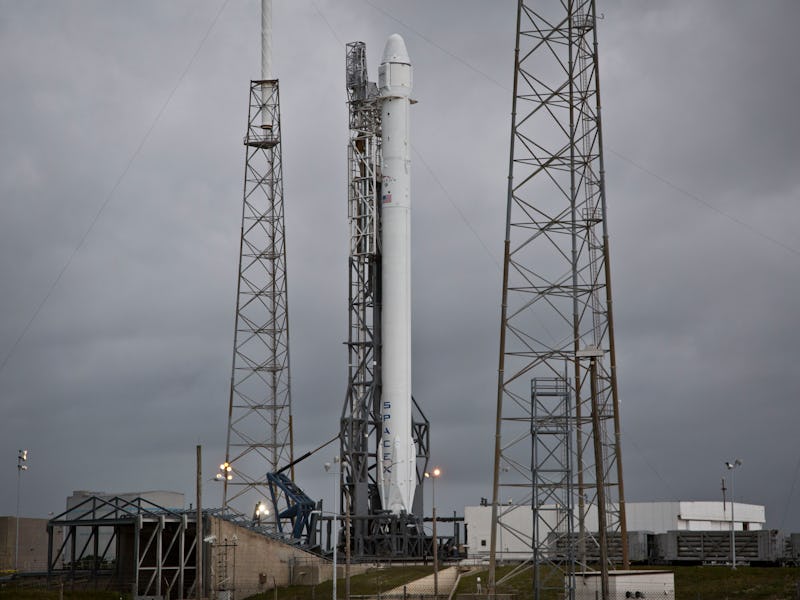SpaceX Takes Latest Big Step Toward Fully Reusable Rockets in Record Time
Talk about the catch of the day.

SpaceX launched a Falcon 9 rocket Thursday morning from the Vandenberg Ari ForceBase, in Southern California. The launch was meant to launch three satellites into orbit and test an upgraded version of the rocket’s fairing, the covering that encases its payload.
SpaceX has pioneered rocket recovery technology, allowing the firm to reuse one rocket for multiple launches. Now it’s trying to implement that principle to its fairings. It’s a feat that Elon Musk said “has proven surprisingly difficult” during a press conference following the successful Falcon Heavy launch earlier this month.
Join our private Dope Space Pics group on Facebook for more strange wonder.
Despite its trickiness, Musk said during that same conference that SpaceX should be able to successfully recover its fairings in about six months. But Thursday’s launch suggests the company is ahead of schedule.
The recovery of the Falcon 9’s fairings on Thursday didn’t go exactly as planned, but showed that SpaceX is well on its way to ushering in an era of fully reusable rockets.
Rocket fairings are protective shields that guard the payload as the rocket blasts it through the atmosphere. Up until now, once the Falcon 9 breaches the atmosphere the shields would split down the middle, reveal the payload, and fall back down into Earth’s atmosphere where they would either burn up or come crashing down near the launch site.
SpaceX’s plan to recover fairings has relied on putting parachutes inside them to slow their descent, but this has proven tricky.
“It turns out if you pop the parachute on the fairing you’ve got this giant awkward thing,” Musk said at the Falcon Heavy press conference, acknowledging this challenge was low priority compared with mastering other parts of rocket reusability. “It tends to interfere with the airflow on the parachute and gets all twisty.”
These modified fairings, on the other hand, deploy parachutes to slow their decent and use thrusters to guide themselves towards a recovery boat that Musk has named Mr. Steven.
The boat was retrofitted with four metal arms and a net to act as a “giant catcher’s mitt” to retrieve the fairings.
While Mr. Steven unfortunately missed its first fly ball, SpaceX seems to have developed a method that is feasible and would save it millions of dollars in replacement fairing costs. Musk said in a tweet that the next attempt to recover fairings using Mr. Steven will be in “about a month.”
Let’s hope Mr. Steven pulls off the catch of the day next time.